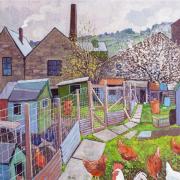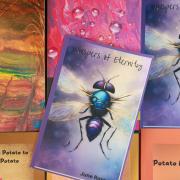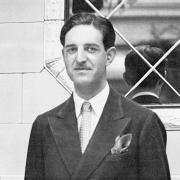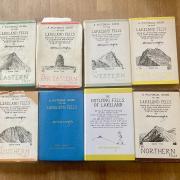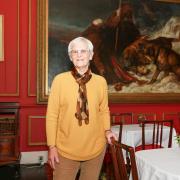People didn’t mince words about E.H. Torrance - especially tripe butchers. Our resident historian tells his story
Of all the controversial figures I have encountered during my research for Forgotten Lancashire (Volume 2), none ranks higher than the novelist E H Torrance. He was also one of the most misunderstood, mainly because he wrote and spoke in a thick Rossendale dialect which few could understand.
Often accused of having an unnatural preoccupation with meat, his novels and poems are filled with sensual descriptions of beef, lamb and pork and were considered obscene by those who believed them to be a metaphor for human flesh. Nothing could be further from the truth.
Torrance was born in Loveclough, a sleepy village on the edge of the Pennines. His father was a butcher, given to simple pleasures such as shooting, fishing, gambling and womanising. Every day, he brought home meat and forced Torrance’s mother, who was vegetarian, to cook it.
When his father died, Torrance abandoned butchering in order to become a writer. If there is one theme which runs through all his work it is meat, particularly what he called ‘poor man’s meat’ - brains, chitterlings, elder, lamb’s fry, sweetbreads, pigs’ trotters and cow heel, all of which both fascinated and repulsed him.
In his first novel, the semi-autobiographical Lungs and Udders, the hero declares his love for cheaper cuts such as pork shoulder, lamb shoulder, and beef chuck. This was followed by the semi-autobiographical Women in Loveclough, in which he extols the virtues of tongue, sweetbreads, liver and kidneys and describes tenderloin as “overrated”. “There’s no flavour or fat, and the texture is horrible,” he wrote, incurring the wrath of the meat establishment.
In 1969, it was made into a film by the controversial director Ken Wrassle. It is probably best remembered for the infamous nude tripe dressing scene in which actors Albert Yates and Oliver Wright clean and trim the fat off unbleached sheets of raw tripe.
His most notorious book, however, is the semi-autobiographical Sadie Hattersley’s Mother. Notable for its controversial description of filet mignon as “one-dimensional”, the book is liberally sprinkled with four letter words such as rump, shin and loin. Pick up an old copy and it will fall open at a typical passage such as this:
“Admit it, you want it,” she said, breathing heavily. (She had forgotten to get a refill for her inhaler.) “You know you want it. Go on. Admit it.”
“Ah do, chuck,”
“How do you want it?” she asked
“Tha knows how I want it. T’Lanky way, stewed in milk wi’ onions an’ a pinch o’ nutmeg. T’way me mam used to mek it.”
Lawyers insisted that all references to meat should be removed from the 400 page manuscript. It was eventually published in 1928 in an abridged version with fewer than 20 pages.
It was described as “a festering cesspit full to the brim with maggot-ridden filth” by the noted vegetarian literary critic RAC Gill. It was, however, popular with butchers and was named Book Of The Year by Butcher’s Weekly in 1928.
Torrance never received the accolades he felt he deserved. His books are out of print and he has now been completely forgotten by the literary establishment. Nevertheless, he is still considered by many butchers to be one of the greatest exponents of the genre of meat-based literature. He has even been described as the Poet Laureate of Meat by Frank Beavis of FR Beavis and Sons (High Class Butchers) Ltd of Lytham. Four of his novels feature in the Meat Trades Journal’s ‘Books of the Century’ – ‘100 Novels You Must Read Before You Die’. w
Forgotten Lancashire and Parts of Cheshire and the Wirral is by Dr Derek J Ripley. To purchase a copy go to www.forgottenlancashire.co.uk






